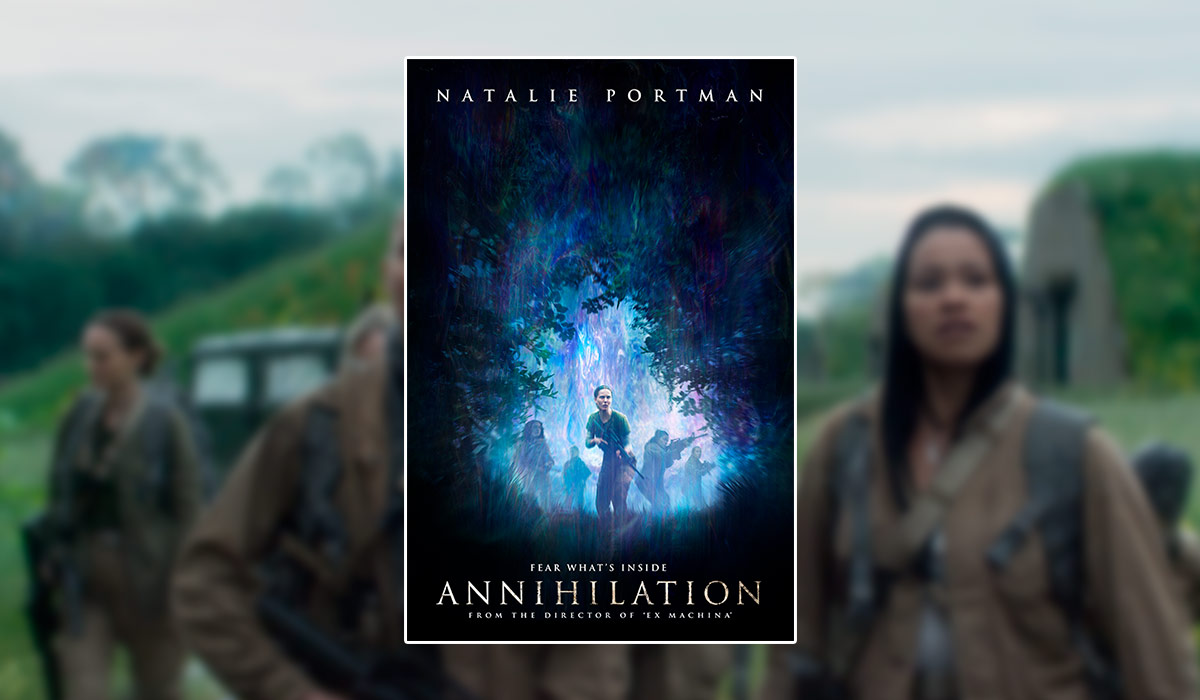

Lena, meanwhile, is wrestling with the loss of her husband (who disappeared on his own mission) and with crippling depression. Ventress was dying from cancer, and her demise-a brilliant but terrifyingly rapid deterioration-reflects that. It’s frightening, but it’s also sort of funny, a little sad, and, of course, highly metaphorical.Įvery member of Lena’s team entered the Shimmer shouldering some sort of trauma. The sequence is like a plaintive sort of waltz, one that was choreographed by Bobbi Jene Smith and performed by Garland’s frequent collaborator Sonoya Mizuno. Down beneath the surface is a chamber that resembles a colossal carapace there, Ventress suddenly appears and vomits glowing energy into the air before transforming into a giant, phosphorescent object.Įventually the object morphs, and Lena is challenged by a shiny metallic humanoid that imitates her every move. Inside lies the burned-up corpse of her husband (Oscar Isaac), who journeyed into the Shimmer before her. After Lena treks through the “Shimmer,” an alien environment that was generated on Earth by a meteor strike, she comes upon a lighthouse surrounded by human bones.

The film’s final scene can be broken into two sections: one taking place above ground and the other below, both beautifully scored by Ben Salisbury and Geoff Barrow’s thrumming score. Read: A longer deconstruction of the ending of ‘Annihilation’ It’s rare for a film this aggressively challenging to make it through the studio net these days, but Annihilation did, and Garland (who had final-cut rights and withstood studio efforts to change the ending) made the most of it. Though it was released in February and for the most part wasn’t even seen in theaters outside of America, Annihilation is the kind of studio oddity that seems destined to stand the test of time, partly because of how bold and unusual its ending is. But most importantly, the ending doesn’t lend itself to easy interpretations, which was exactly the experience that I sought from Garland’s film (as a big fan of VanderMeer’s writing). The movie’s conclusion sees the protagonist, Lena (played by Natalie Portman), encountering some very curious things, including a copy of herself and a glowing, undulating Mandelbulb that was once her fellow explorer Ventress (Jennifer Jason Leigh).
Aniquilation filme how to#
Garland, in his telling, read a galley of VanderMeer’s novel, absorbed it, and said to the author, “I don’t know how to do a faithful adaptation of your book.” The director wasn’t lying-his take on Annihilation is similar in plot setup (a biologist investigates a mysterious zone with an all-female team of scientists), but quite different in many other ways. The Crawler is perhaps slightly less malevolent, but nonetheless difficult to explain: a fungal hodgepodge of people, animal, plants, and things at the center of Annihilation’s surreal “Area X.”

Lovecraft enjoyed writing about monsters that were too terrible to behold, that would reduce anyone who looked at them to a gibbering mess. The main character, an unnamed biologist, descends the staircase of a mysterious underground structure she calls the “tower” and encounters a creature called the “Crawler,” a being that is all but indescribable. The denouement of Jeff VanderMeer’s novel Annihilation is Lovecraftian in its sci-fi inscrutability.
Aniquilation filme series#
Over the next week, The Atlantic’s “And, Scene” series will delve into some of the most interesting films of the year by examining a single, noteworthy cinematic moment from 2018.


 0 kommentar(er)
0 kommentar(er)
